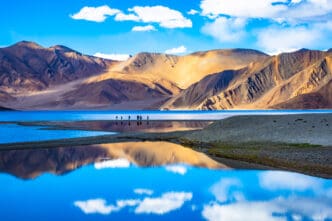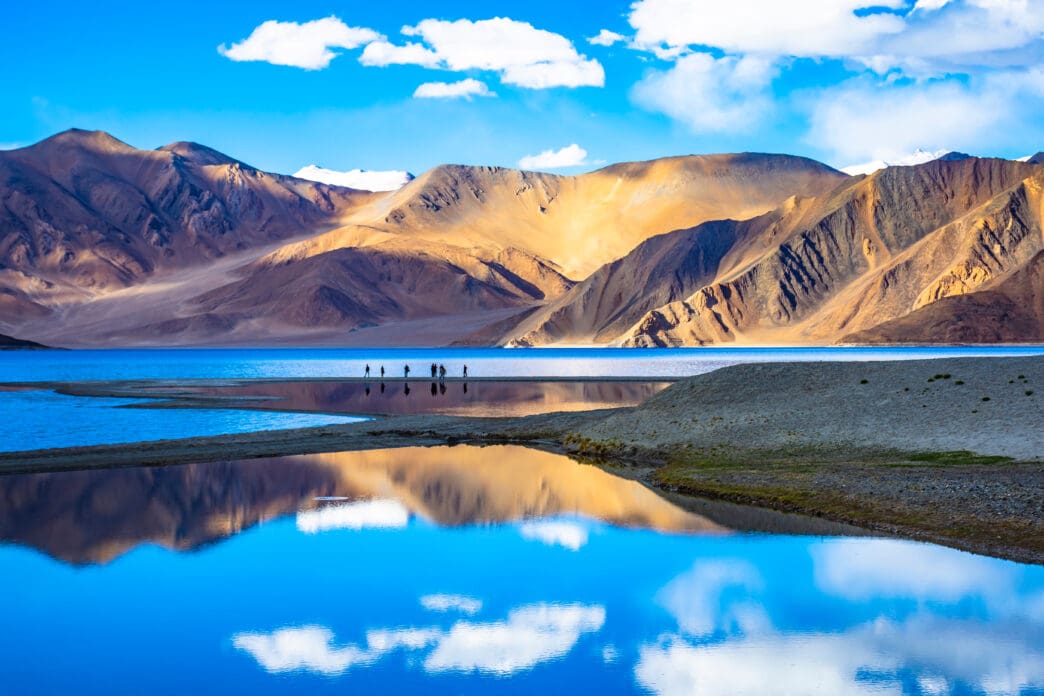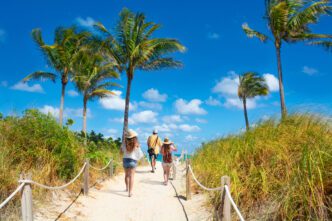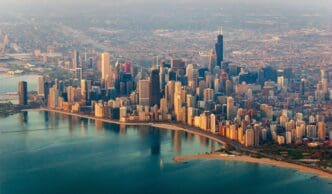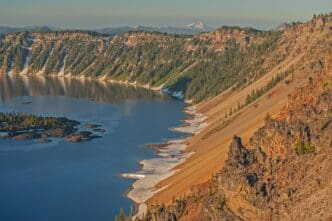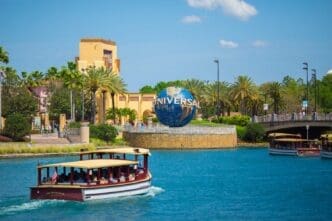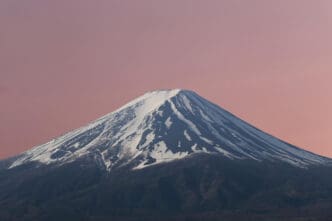Your Essential Overview
- The world’s most beautiful lakes are diverse natural wonders categorized by their geological origins: Glacial, Volcanic, and High-Altitude.
- The guide highlights specific examples within each category, such as Lake Louise, Plitvice Lakes, Crater Lake, and Lake Titicaca, detailing their unique features and optimal visiting periods.
- Planning a lakeside adventure requires thoughtful preparation regarding the best time to visit, accommodation, and activities, with a strong emphasis on responsible tourism to preserve these fragile ecosystems.
The Destination’s Lore
- The world’s most stunning lakes are celebrated for their unparalleled natural beauty and tranquil escapes, stemming from their diverse geological origins—including glacial, volcanic, and high-altitude formations—which imbue them with distinct visual splendor and ecological significance, making them prime destinations for travelers seeking adventure, cultural immersion, and a deep connection with nature.
Making the Trip Yours
- This ultimate travel guide underscores the immense appeal of the world’s most stunning lakes as diverse travel destinations, offering unique opportunities for adventure, cultural immersion, and connecting with nature. A key implication for travelers is the necessity of thoughtful planning and adhering to responsible tourism practices, such as Leave No Trace principles, to ensure the preservation of these fragile and pristine ecosystems for future enjoyment.
Perspectives from the Road
- Travelers, adventurers, photographers, and peace-seekers view the world’s stunning lakes as sources of unparalleled natural beauty and tranquil escapes, offering unforgettable experiences and a deeper connection with nature through various activities.
- The article’s categorization perspective highlights lakes as natural marvels defined by their geological origins (glacial, volcanic, or high-altitude), each possessing distinct characteristics, visual splendor, and ecological significance as dynamic canvases and vital habitats.
- Indigenous communities and local cultures, such as the Batak, Mayan, and Andean peoples, perceive certain lakes as places of immense cultural and spiritual significance, deeply intertwined with their heritage and traditions.
For travelers seeking unparalleled natural beauty and tranquil escapes, the world’s most stunning lakes offer a diverse array of breathtaking landscapes, from serene glacial waters reflecting towering peaks to vibrant volcanic craters and crystal-clear alpine pools. These aquatic wonders, found across every continent, beckon adventurers, photographers, and peace-seekers alike, promising unforgettable experiences and a deeper connection with nature. This ultimate travel guide will navigate you through these extraordinary destinations, providing insights into their unique allure, best times to visit, and essential tips for planning your next lakeside adventure.
The Irresistible Allure of Lakes
Lakes possess a unique charm, often serving as the focal point of their surrounding ecosystems. They are dynamic canvases, reflecting the changing light, seasons, and skies, offering a visual spectacle that continuously evolves. Beyond their aesthetic appeal, many lakes are steeped in local culture, history, and ecological significance, providing rich layers of discovery for the conscientious traveler.
From their formation through ancient geological processes to their role as vital habitats for diverse flora and fauna, lakes are natural marvels. Their accessibility often makes them ideal for various activities, including hiking, kayaking, swimming, and simply unwinding by the shore. Understanding the different types of lakes can enhance your appreciation and help you choose the perfect destination.
Categories of Lakeside Wonders
The world’s most beautiful lakes can be broadly categorized by their geological origins, each offering distinct characteristics and visual splendor. Exploring these categories helps travelers appreciate the vast diversity of these natural attractions.
Glacial Lakes: Mirrors of the Mountains
Formed by the immense power of retreating glaciers, these lakes are renowned for their vibrant, often turquoise or emerald, hues, a result of glacial flour (finely ground rock particles) suspended in the water. They are typically nestled in dramatic mountain settings, offering stunning panoramic views.

Lake Louise, Canada: Nestled within Banff National Park, Alberta, Lake Louise is arguably one of the most iconic glacial lakes. Its vibrant turquoise waters, fed by the Victoria Glacier, are framed by towering peaks and the majestic Fairmont Chateau Lake Louise. Visitors can enjoy canoeing, hiking to the Lake Agnes Teahouse, or simply soaking in the views, particularly beautiful from late spring to early autumn.

Plitvice Lakes, Croatia: A UNESCO World Heritage site, Plitvice Lakes National Park is a series of 16 terraced lakes, interconnected by stunning waterfalls and cascades. The waters shift in color from azure to green, grey, or blue, depending on the mineral content and sunlight. Wooden walkways guide visitors through this magical landscape, making it an immersive experience best explored during spring or fall to avoid summer crowds.

Lake Bled, Slovenia: Featuring a picturesque island with a church and a medieval castle perched on a cliff overlooking its emerald green waters, Lake Bled is a fairytale destination. Rowboats (pletna) can take you to the island, and the surrounding trails offer breathtaking views. Autumn provides particularly vibrant foliage, enhancing its romantic appeal.
Volcanic Lakes: Craters of Beauty
These lakes are formed in volcanic craters or calderas, often exhibiting unique geological features and vibrant, sometimes otherworldly, colors due to mineral deposits. They frequently offer dramatic landscapes and a sense of raw, untamed nature.

Crater Lake, USA: Located in Oregon, Crater Lake is the deepest lake in the United States, famous for its intense blue color and pristine water clarity. Formed over 7,700 years ago by the collapse of Mount Mazama, it offers boat tours to Wizard Island and a scenic rim drive. Summer and early fall are ideal for visiting, as winter brings heavy snow.

Lake Toba, Indonesia: The world’s largest volcanic lake, Lake Toba in Sumatra, is an immense caldera lake with an island almost the size of Singapore within it. It’s a place of immense cultural significance for the Batak people and offers a tranquil escape with warm water for swimming and lush surroundings. The dry season (May to September) is best for comfortable travel.

Lake Atitlán, Guatemala: Surrounded by three majestic volcanoes and several indigenous Mayan villages, Lake Atitlán is often described as one of the most beautiful lakes in the world. Its deep blue waters and vibrant local culture make it a captivating destination for travelers seeking both natural beauty and cultural immersion. Boat taxis connect the various villages, each offering unique experiences. The dry season, from November to April, provides the most pleasant weather.
High-Altitude Lakes: Serene Heights
Perched high in mountain ranges, these lakes often boast breathtaking panoramas, crisp air, and a profound sense of isolation and grandeur. They are typically pristine and offer challenging yet rewarding trekking opportunities.

Lake Titicaca, Peru/Bolivia: The highest navigable lake in the world, Lake Titicaca is a vast, shimmering expanse that holds deep spiritual significance for the Andean cultures. Visitors can explore the floating Uros islands made of totora reeds, or visit Taquile Island for its rich textile traditions. The best time to visit is during the dry season, from May to October.

Pangong Tso, India/China: Located in the Himalayas, this endorheic lake is famous for its ever-changing shades of blue, ranging from light azure to deep indigo. While parts are contested, the accessible Indian side in Ladakh offers unparalleled beauty, though reaching it requires permits and careful planning due to its high altitude. Summer months (June to September) are the only practical time to visit.
Planning Your Lakeside Adventure
Visiting these natural wonders requires thoughtful preparation to ensure a safe and enjoyable trip. Consider these practical tips when planning your journey.
Best Time to Visit
The optimal time to visit a lake depends heavily on its geographical location and climate. For glacial and high-altitude lakes, the summer months (June to September in the Northern Hemisphere, December to March in the Southern Hemisphere) generally offer the most accessible conditions and pleasant weather for outdoor activities. Volcanic and tropical lakes might be best enjoyed during their respective dry seasons to avoid heavy rainfall and muddy trails.
Accommodation and Activities
Lakeside accommodations range from luxurious resorts and boutique hotels to charming guesthouses, campsites, and rustic cabins. Many locations offer a plethora of activities, including kayaking, paddleboarding, fishing, hiking, cycling, and wildlife viewing. Researching local tour operators and park regulations in advance is highly recommended.
Responsible Tourism
When visiting these pristine environments, practicing responsible tourism is paramount. Adhere to Leave No Trace principles: pack out everything you pack in, stay on marked trails, respect wildlife, and support local economies by choosing sustainable services. Many beautiful lakes are fragile ecosystems, and our collective efforts help preserve them for future generations.
Always check local regulations regarding swimming, boating, and drone usage, as these can vary significantly by location and protected status. Being a respectful and informed traveler contributes positively to the conservation of these natural treasures.
Conclusion
The world’s most beautiful lakes offer a spectrum of awe-inspiring experiences, from the dramatic grandeur of glacial valleys to the serene mystery of volcanic craters. Each destination presents a unique blend of natural splendor, cultural richness, and opportunities for adventure or peaceful contemplation. By embracing responsible travel practices and planning thoughtfully, you can embark on an unforgettable journey to these aquatic jewels, creating memories that will last a lifetime and fostering a deeper appreciation for our planet’s remarkable natural heritage.

